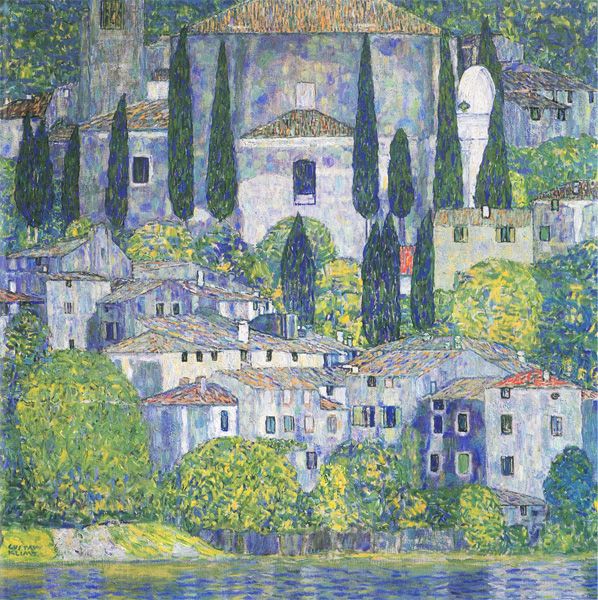The village of Cassone is on the shore of Lake Garda, and Klimt, staying at nearby Malescine with his lover, Emilie Klöge, and her family, used a telescope to assist him in making the painting as he could not get closer to his subject.
The Austrian painter, Gustav Klimt, was born in Baumgarten in 1862 and is best known today for his instantly recognisable and intricate paintings featuring the female form, and often embellished with gold and vibrant colours. In later life, Klimt also turned to landscape painting, enjoying the freedom to choose his subjects for himself rather than working to commission. With exhibition in mind, he made them all a consistent size and shape; 110cms x 110cms. The square format is much more compositionally challenging than the more usual landscape format.
He painted Church in Cassone in 1913. Church in Cassone features his trademark richly patterned surface and the dark green conical shapes of the cypress trees contrast strongly against the soft, dappled light on the painted stone buildings. The unusual placement of a central tree draws the eye directly into the middle of the composition before allowing it to explore the rest of the painting, drawn around by the interplay between the colour of the trees and the red tiled roofs of the buildings. The lack of a horizon, the absence of a sky and the flattened perspective all add to the feeling that the pattern and texture of the surface mattered most to the artist.
The picture disappeared for many years, stolen after its owners sent it for safe storage during the annexation of Austria in 1938. Having resurfaced it was sold by Sotheby's in 2010 for nearly £27 million. A descendant of the original owners and the current owners, who had bought the picture in good faith, shared the proceeds of the sale.




